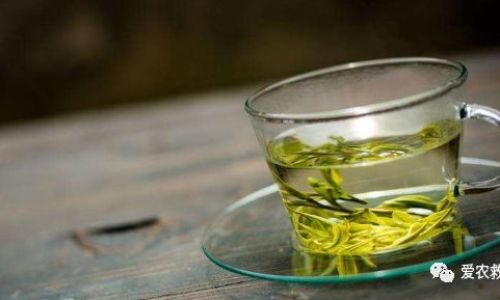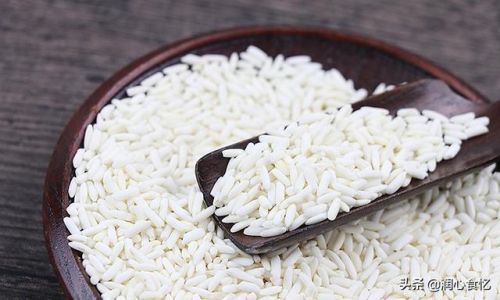Table of content
- Type of Tea
- Plant Type
- Soil Condition
- Environmental Factors
- Daily Use: Lightly Steeped Tea
- Weekly Use: Moderately Steeped Tea
- Cold Brewing: Extended Steeping
- Tea Leaves as Compost
- Using Freshly Brewed Hot Tea
- Oversteeping Tea
- Overusing Tea
- Ignoring Plant-Specific Needs
- Case Study 1: Roses and Black Tea
- Case Study 2: Succulents and Green Tea
- Case Study 3: Hydroponic Lettuce and Cold Brew
Introduction
Using tea as a natural fertilizer for plants has gained popularity among gardeners and eco-conscious individuals seeking sustainable ways to nourish their greenery. Tea, rich in nutrients like nitrogen, potassium, and trace minerals, can enhance soil fertility and promote plant growth when applied correctly. However, a common question arises: How long should tea steep before it is safe and effective for watering plants? The answer lies in understanding the chemistry of tea, the needs of your plants, and the environmental factors that influence nutrient release. This article explores the science behind tea steeping times, practical guidelines for application, and potential pitfalls to avoid, ensuring your plants thrive without harm.
The Science Behind Tea as a Fertilizer
Tea leaves contain organic compounds, including tannins, caffeine, and antioxidants, which break down during steeping. The steeping process extracts these compounds into the water, creating a nutrient-rich liquid that can benefit plants. However, the duration of steeping determines the concentration and composition of these compounds.

- Tannins: These astringent compounds, found in varying amounts depending on the tea type (e.g., black tea has more tannins than green tea), can acidify soil over time. While some plants, like azaleas or blueberries, thrive in acidic conditions, excessive tannins may harm alkaline-loving species.
- Nutrients: Tea provides nitrogen, which is vital for leafy growth, and potassium, essential for root development and flower production. However, the solubility of these nutrients depends on steeping time—longer steeping may release more nutrients but also increase tannin levels.
- Microbial Activity: Cooled tea water introduces beneficial microbes to the soil, aiding decomposition and nutrient cycling. However, hot tea can kill these microbes, emphasizing the need to let tea cool before use.
Factors Influencing Steeping Time
The ideal steeping time for tea used in gardening varies based on several factors:
Type of Tea
- Black Tea: Steep for 12–24 hours. Its high tannin content requires longer extraction to balance nutrient release without over-acidifying the soil.
- Green Tea: Steep for 8–12 hours. Milder in tannins, it suits plants sensitive to acidity, such as herbs or succulents.
- Herbal Tea (e.g., chamomile, mint): Steep for 4–6 hours. These teas often have lower tannin levels and may offer plant-specific benefits (e.g., chamomile’s antifungal properties).
Plant Type
- Acid-Loving Plants: Roses, hydrangeas, and ferns benefit from longer-steeped black tea, which lowers soil pH gradually.
- Neutral/Alkaline-Loving Plants: Cacti, lavender, and spinach require shorter steeping times or diluted tea to prevent acidity buildup.
Soil Condition
- Sandy Soil: Drains quickly, so frequent, lightly steeped tea (4–6 hours) prevents leaching of nutrients.
- Clay Soil: Retains moisture longer, allowing occasional use of moderately steeped tea (8–12 hours) to avoid waterlogging.
Environmental Factors
- Temperature: In warm climates, tea may ferment faster, requiring shorter steeping to prevent mold. Cold environments may need longer times for nutrient extraction.
- Humidity: High humidity increases the risk of fungal growth in standing tea; use promptly or refrigerate if steeping overnight.
Recommended Steeping Times and Application Methods
Daily Use: Lightly Steeped Tea
For routine watering, steep tea for 4–6 hours. This method offers a mild nutrient boost without drastically altering soil chemistry.
- Process:
- Brew 1–2 tea bags (or loose leaves) in 1 liter of hot water.
- Let cool to room temperature.
- Remove tea bags/leaves.
- Dilute with equal parts plain water to prevent over-fertilization.
- Best For: Houseplants, vegetables, and delicate seedlings.
Weekly Use: Moderately Steeped Tea
Steep for 8–12 hours to create a balanced fertilizer for outdoor gardens.
- Process:
- Use 3–4 tea bags in 2 liters of water.
- Steep overnight in a cool, dark place.
- Strain leaves and apply directly to the soil.
- Best For: Flowering plants, shrubs, and acid-tolerant species.
Cold Brewing: Extended Steeping
For a gentle, low-tannin solution, cold-brew tea for 24–48 hours.
- Process:
- Submerge tea bags in cold water and refrigerate.
- Use within two days to prevent spoilage.
- Best For: Sensitive plants like orchids or African violets.
Tea Leaves as Compost
Used tea leaves can be added directly to compost piles or mixed into soil. They decompose slowly, enriching the soil over time.
- Tip: Avoid glossy or bleached tea bags, as they may contain non-biodegradable materials.
Common Mistakes to Avoid
Using Freshly Brewed Hot Tea
Hot tea can shock plant roots and kill beneficial soil microbes. Always cool tea to room temperature before application.
Oversteeping Tea
Steeping beyond 24 hours may lead to mold or bacterial growth, especially in humid conditions. Discard tea if it develops an off smell or film.
Overusing Tea
Excessive tea can lead to nutrient imbalances or soil acidification. Limit applications to once a week for most plants.
Ignoring Plant-Specific Needs
A one-size-fits-all approach risks harm. Research your plant’s pH and nutrient requirements before using tea.

Case Studies: Real-World Applications
Case Study 1: Roses and Black Tea
A gardener in the Pacific Northwest reported stunted growth in her rose bushes after using undiluted, 24-hour steeped black tea weekly. Soil tests revealed a pH drop from 6.5 to 5.0, inhibiting nutrient uptake. By switching to 12-hour steeped tea diluted 1:1 with water, the roses recovered within two months.
Case Study 2: Succulents and Green Tea
A succulent enthusiast in Arizona used 8-hour steeped green tea monthly. The mild tannin content maintained soil pH around 6.8, ideal for echeverias and aloe. The plants exhibited vibrant growth without etiolation.
Case Study 3: Hydroponic Lettuce and Cold Brew
A hydroponics researcher found that cold-brewed tea (48 hours) improved lettuce yield by 15% compared to synthetic fertilizers. The slow-release nutrients minimized nitrate spikes, a common issue in hydroponic systems.
Expert Insights: What the Studies Say
Research from the Royal Horticultural Society (RHS) indicates that tea waste can enhance soil structure when composted, increasing water retention by 20% in sandy soils. However, liquid tea applications show variable results depending on steeping time. A 2021 study in the Journal of Plant Nutrition found that 12-hour steeped black tea increased tomato yield by 12% in acidic soils (pH <6.0) but reduced yield by 8% in alkaline soils (pH >7.5).
Alternative Uses for Tea in Gardening
- Pest Deterrent: Spray cooled, strongly brewed peppermint tea on leaves to repel aphids.
- Seed Starting: Soak seeds in 4-hour steeped chamomile tea to prevent damping-off disease.
- Foliar Feed: Mist diluted green tea on leaves for a quick nutrient boost (avoid direct sunlight to prevent leaf burn).
Conclusion: Finding Your Tea Steeping Sweet Spot
The optimal steeping time for tea used in gardening hinges on balance—between nutrient availability and soil health, plant preferences, and environmental conditions. By experimenting with steeping durations and observing plant responses, you can tailor a regimen that turns a simple cup of tea into a powerful tool for sustainable gardening. Remember: moderation is key. Over time, you’ll discover that the perfect brew for your plants is as much an art as it is a science.
Final Tip: Always test soil pH every 3–6 months and adjust tea applications accordingly. Happy gardening!
Word Count: 1,342






0 comments